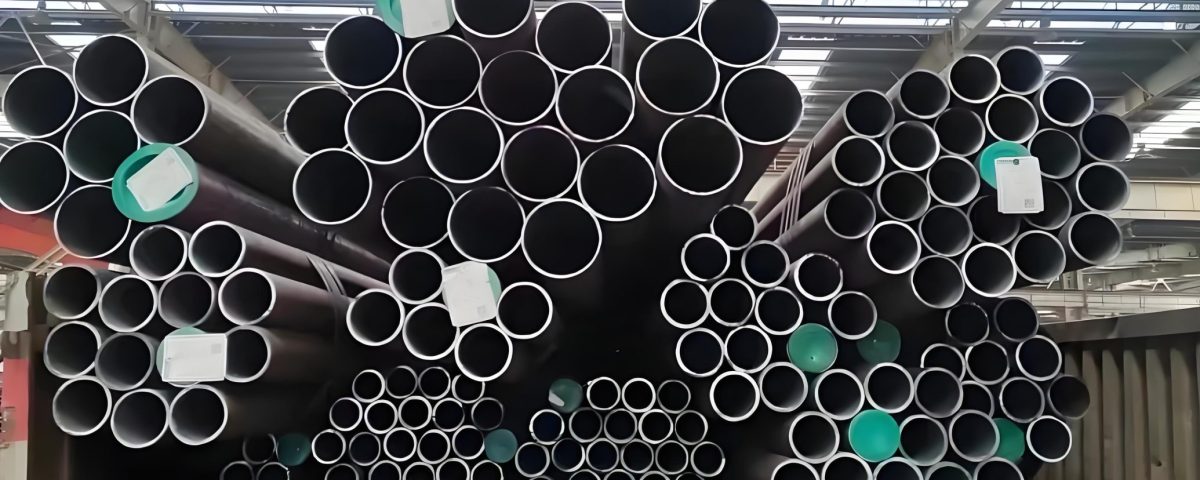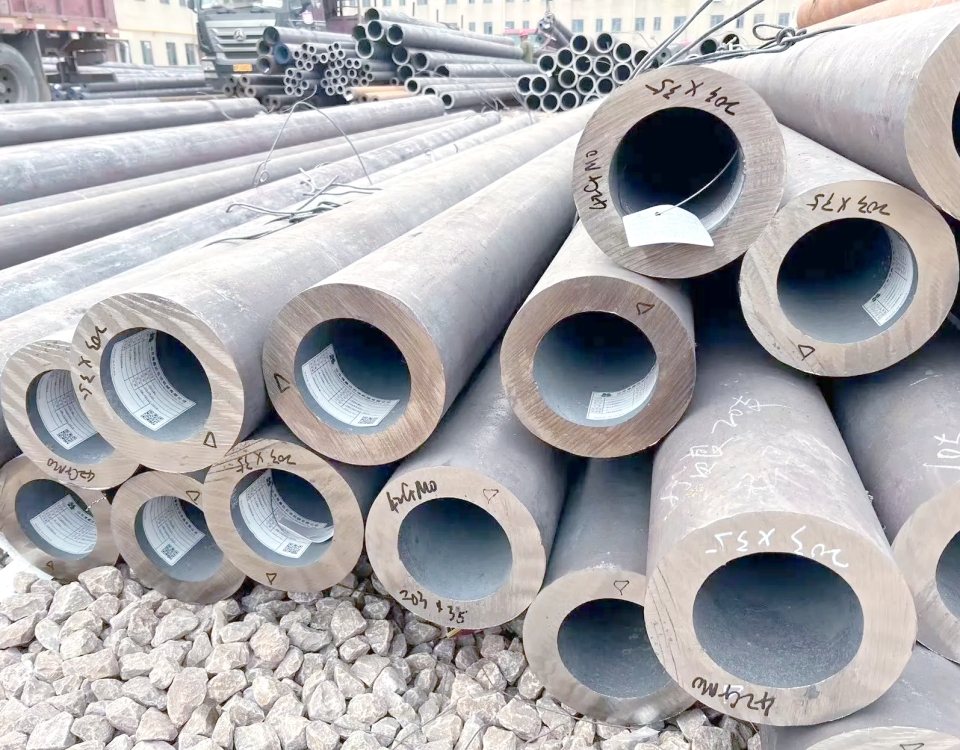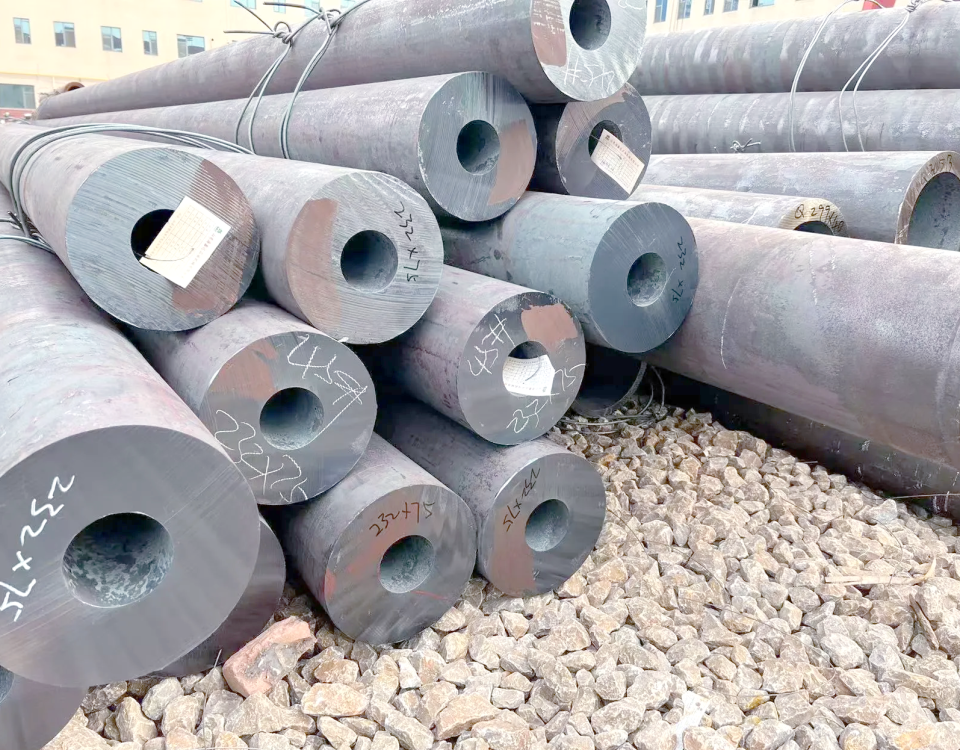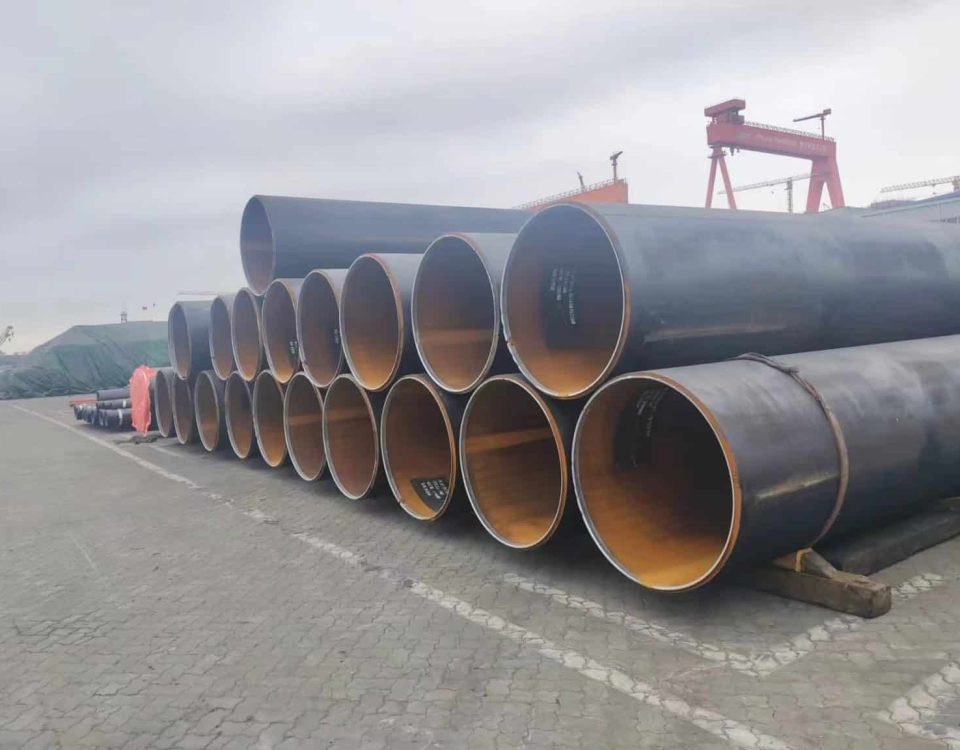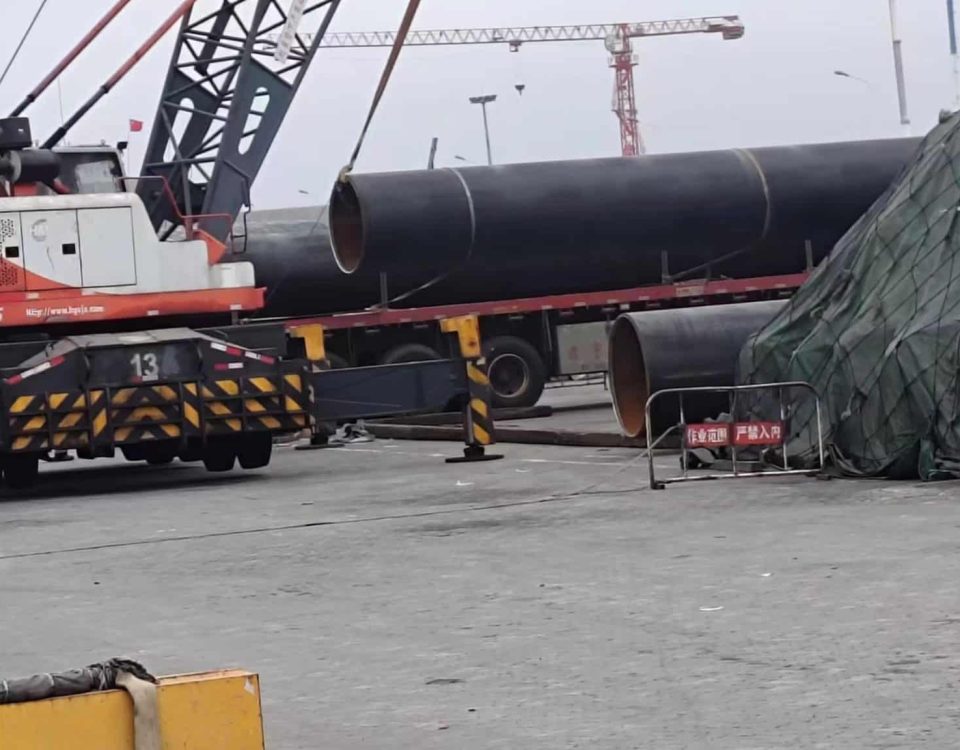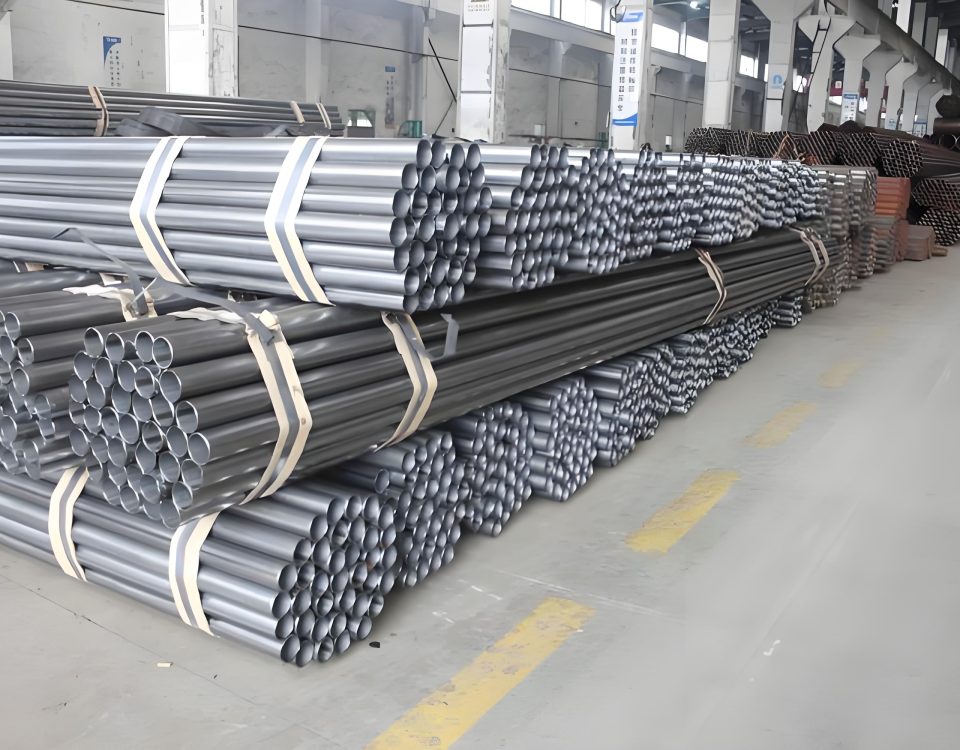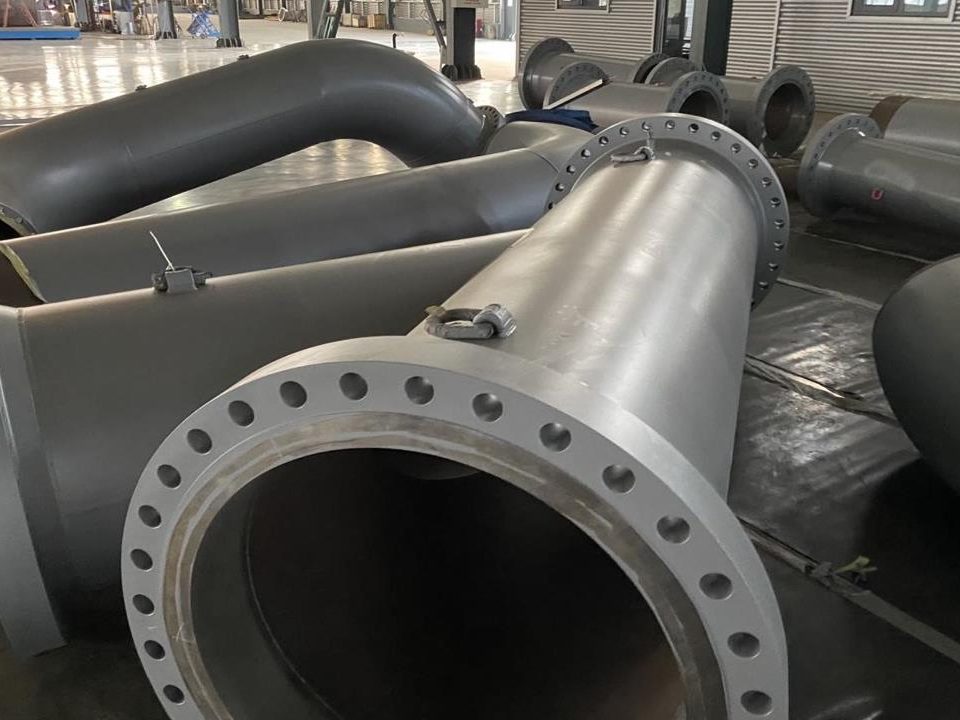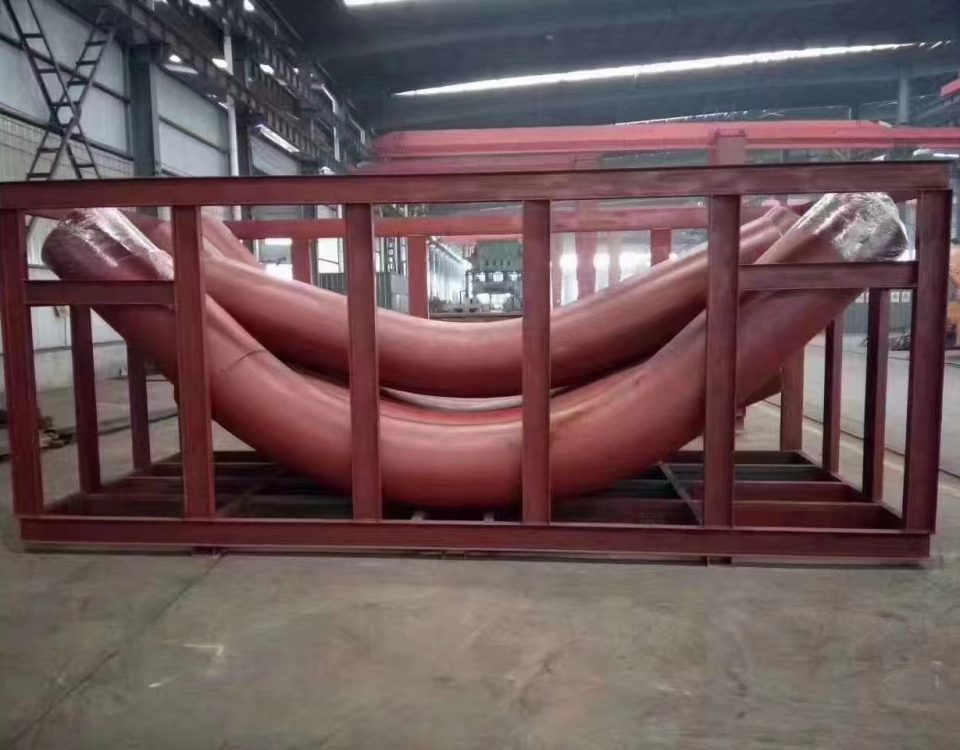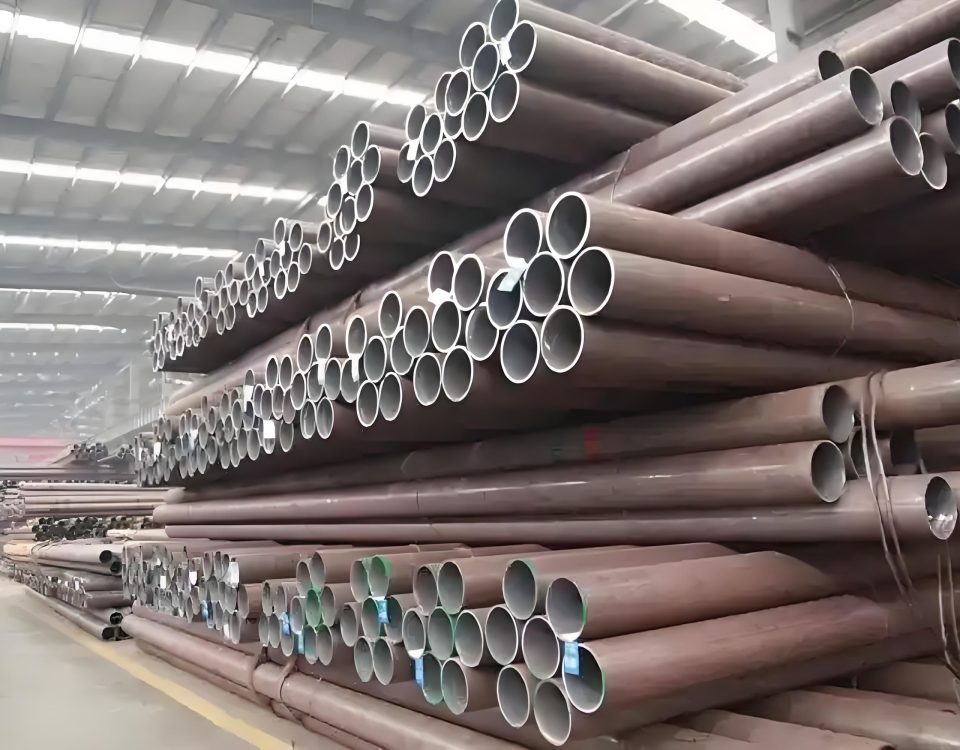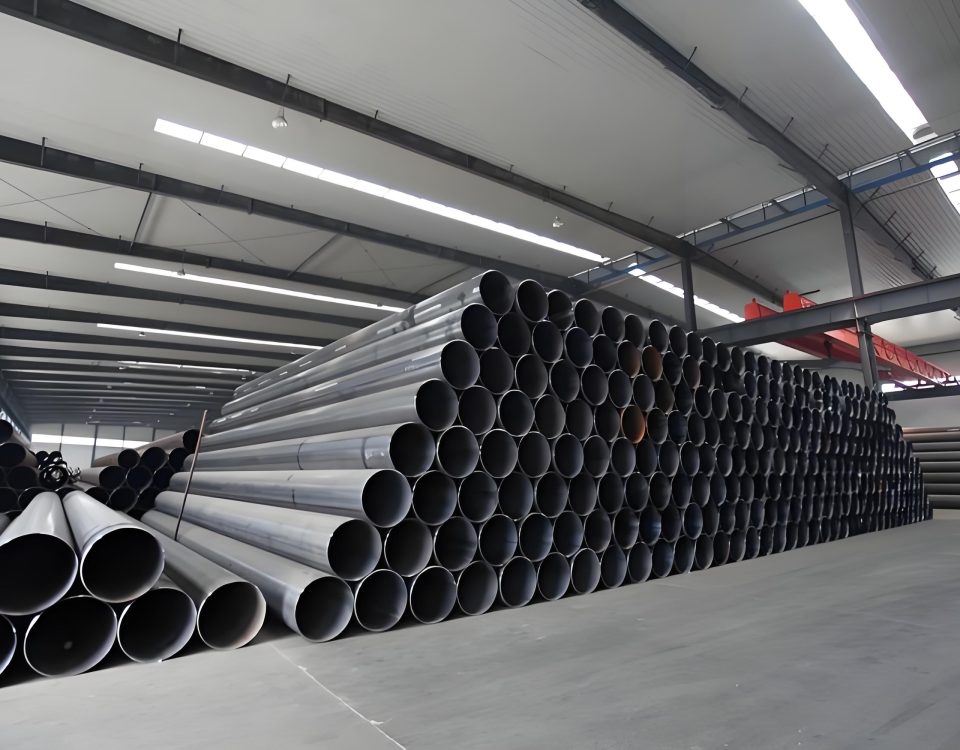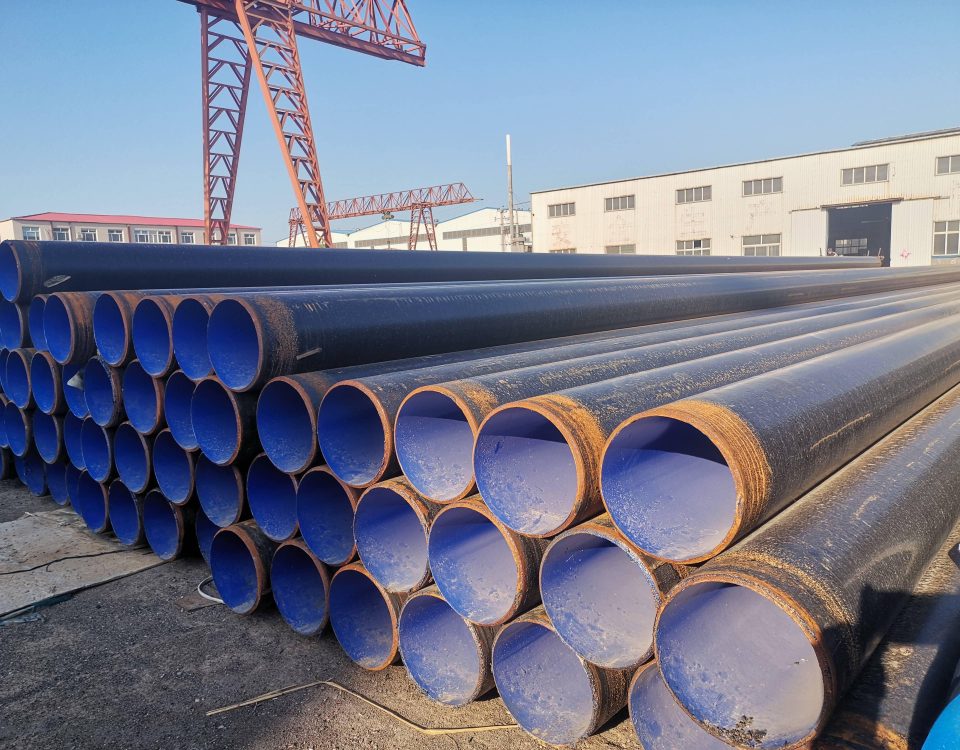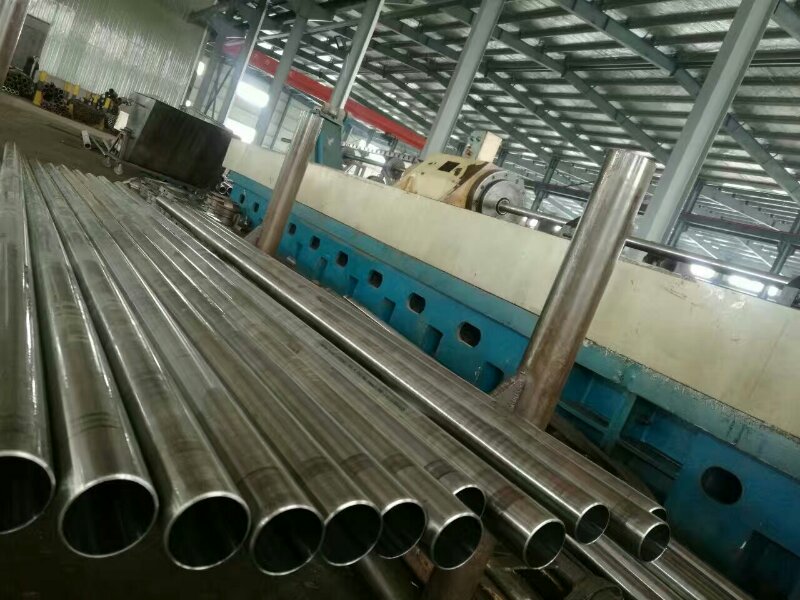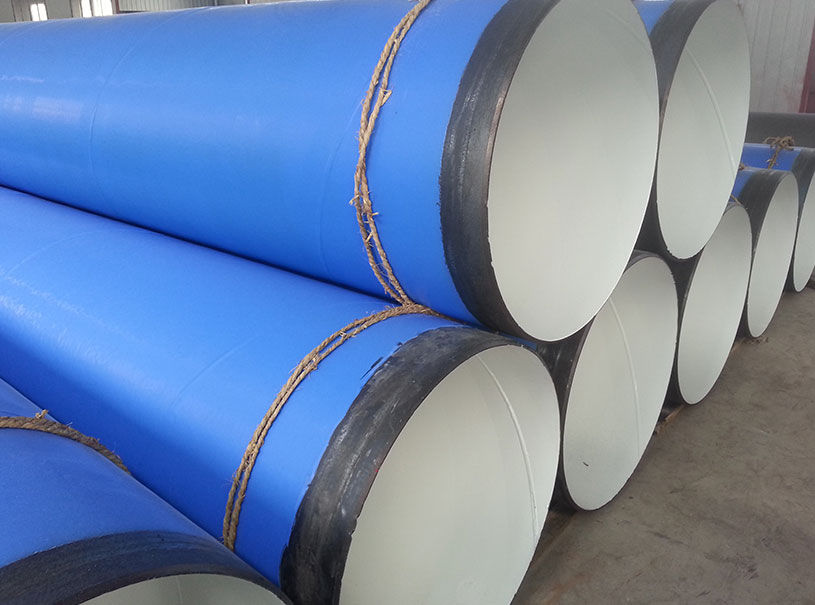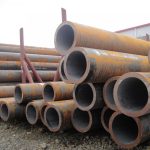
Thick Wall Seamless Steel Pipe
June 5, 2025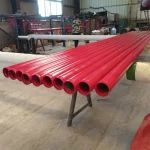
ASTM A795 ERW Fire Fighting Pipe
June 13, 2025Scientific Analysis of Seamless Steel Pipes for Petroleum Cracking per GB 9948 and Related Standards
Material Composition and Manufacturing per GB 9948
Seamless steel pipes for petroleum cracking, as specified by China’s national standard GB 9948-2013, are designed for high-temperature (600-700°C) and high-pressure (10-20 MPa) environments in oil refineries, where hydrocarbons are cracked into lighter fractions like gasoline, diesel, and ethylene. The standard categorizes steel grades into three types:
- Carbon Structural Steel: Grades 10# (C 0.07-0.13%, Mn 0.35-0.65%) and 20# (C 0.17-0.23%, Mn 0.35-0.65%) offer tensile strengths of 335-410 MPa and yield strengths of 205-235 MPa, suitable for low-pressure transfer lines due to cost-effectiveness but limited corrosion resistance.
- Alloy Structural Steel: Grades like 12CrMo (0.4-0.7% Cr, 0.4-0.55% Mo), 15CrMo (0.8-1.1% Cr, 0.4-0.55% Mo), 12Cr1MoV (0.9-1.2% Cr, 0.25-0.35% Mo, V 0.15-0.30%), and 12Cr9MoI (8-10% Cr, 0.85-1.05% Mo) provide enhanced creep strength and corrosion resistance, with tensile strengths of 410-540 MPa and yield strengths of 205-295 MPa. Chromium and molybdenum form protective Cr₂O₃ layers and carbides, reducing sulfidation rates to <0.1 mm/year at 650°C.
- Stainless Steel: Grades like 07Cr19Ni10 (TP304 equivalent, 18-20% Cr, 8-11% Ni), 07Cr18Ni11Nb (TP347H), 07Cr19Ni11Ti (TP321), and 022Cr17Ni12Mo2 (TP316L) resist carburization and intergranular corrosion, with tensile strengths ≥485 MPa and elongation ≥35%. Molybdenum (2-3% in 316L) enhances pitting resistance in H₂S environments.
Manufacturing involves hot-rolling or cold-drawing solid billets, producing seamless pipes with outer diameters (OD) from 10 mm to 426 mm, wall thicknesses (WT) from 1.5 mm to 50 mm (SCH 40-XXS), and lengths up to 12 m. Hot-rolling at 900-1200°C ensures a uniform ferrite-pearlite or bainitic structure, while cold-drawing refines grains (10-20 μm), boosting strength and surface finish (Ra ≤1.6 μm). Standards like GB 9948, ASTM A335, and EN 10216-2 mandate normalizing (900-950°C) or tempering (650-750°C) to optimize creep resistance and toughness.
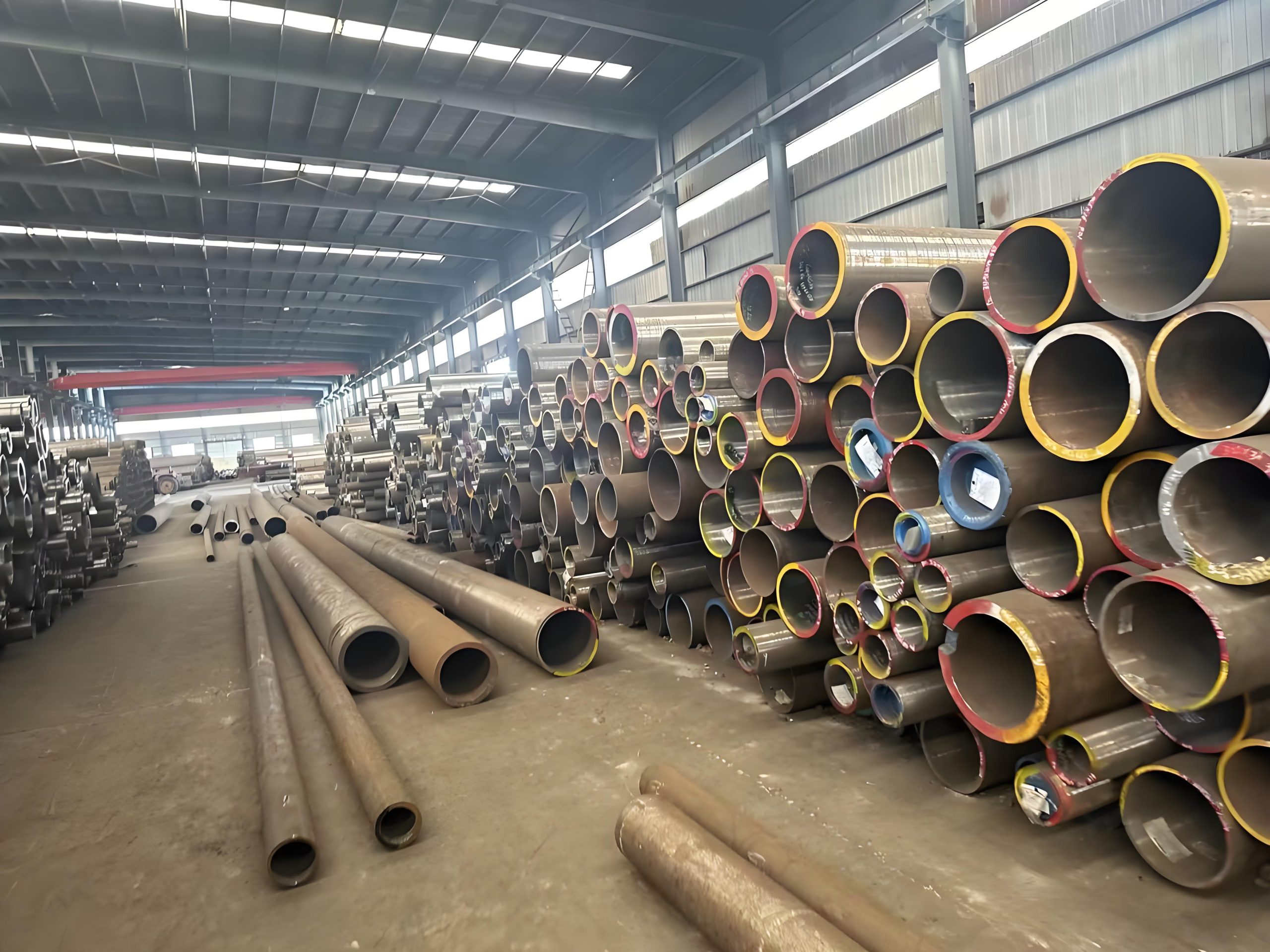
Corrosion Resistance and Environmental Performance
Petroleum cracking pipes face sulfidation, hydrogen attack, and coking due to sulfur compounds (H₂S, 10-100 ppm), hydrogen gas, and hydrocarbon residues. Carbon steel grades (10#, 20#) corrode at 1-3 mm/year in H₂S-rich environments at 600°C, limiting their use to low-corrosion applications. Alloy steels like 12Cr1MoV and 12Cr9MoI form stable Cr₂O₃ layers, reducing corrosion to <0.1 mm/year, with vanadium enhancing hydrogen resistance. Stainless steels like 07Cr19Ni11Ti (TP321) resist carburization (carbon diffusion <0.01 mm/year at 700°C) and intergranular corrosion, per GB 9948. Coking is mitigated by aluminized coatings (5-10 μm Al layer) or smooth surfaces via pickling, reducing fouling by 40-60%. External coatings (e.g., 3LPE) and cathodic protection (-850 mV vs. Cu/CuSO₄) protect buried lines, extending service life to 20-30 years in cracking furnaces, heat exchangers, and transfer lines.
Mechanical Features and Applications
The seamless design of petroleum cracking pipes maximizes fluid delivery due to their large cross-sectional area under equal circumference, ideal for annular components like furnace tubes and reactor coils. Grades like 15CrMo and 12Cr5MoNT (tensile strength 440-540 MPa) support high-pressure systems (10-20 MPa), with SCH 160 pipes handling ~30 MPa at 650°C, per ASME B31.3. Seamless pipes offer 20-25% higher burst strength than welded, critical for ethylene crackers and hydrocracking units. Their use in manufacturing rolling bearing rings, jack sets, gun barrels, and other precision components improves material utilization by 10-15%, simplifies processes, and saves processing time, per GB 9948. Stainless grades like 022Cr17Ni12Mo2 ensure hygiene and durability in corrosive media. Delivery conditions (annealed, pickled) and end finishes (plain, beveled, threaded) ensure versatility, with delivery within 15-30 days.
Comparative Analysis with ASTM and API Standards
Stock seamless steel pipes for oil cracking, such as ASTM A53/A106 Gr. B (tensile strength 415 MPa, yield 240 MPa) and API 5L grades (Gr. B, X42, X52, K55, J55, L80), are used in less demanding applications compared to GB 9948 alloy and stainless grades. ASTM A106 Gr. B lacks sufficient Cr/Mo for high-temperature corrosion resistance, corroding at 1-2 mm/year in H₂S environments, while API 5L X52 (yield 359 MPa) suits pipelines but not cracking furnaces due to limited creep strength. GB 9948 grades like 12Cr9MoNT and 07Cr18Ni11Nb outperform ASTM A106 and API 5L in sulfidation resistance (5-10 times lower corrosion rates) and creep life (100,000 hours at 600°C), making them ideal for refinery reactors. Future advancements include nanostructured coatings and real-time coking sensors to enhance performance.
Dimension Range and Standards
| Application | OD Range | WT Range | Length Range | Standards |
|---|---|---|---|---|
| Cracking Furnaces | 10-426 mm | 1.5-50 mm | 5-12 m | GB/T 9948, ASTM A335, EN 10216-2 |
| Heat Exchangers | 1/2” – 12” | SCH 40, 80, 160 | Up to 12 m | ASTM A213, A312, GB/T 9948 |
| Transfer Lines | 1/8” – 24” | SCH 40, 80, XXS | Up to 12 m | GB/T 9948, ASTM A335, GOST 9941 |
| Refinery Piping | 10-323 mm | 1.5-40 mm | 5-12 m | GB/T 9948, ASTM A106, EN 10216-2 |
Chemical Composition and Mechanical Properties
| Standard | Grade | C (%) | Si (%) | Mn (%) | P (%) | S (%) | Cr (%) | Mo (%) | Tensile Strength (min MPa) | Yield Strength (min MPa) | Elongation (%) |
|---|---|---|---|---|---|---|---|---|---|---|---|
| GB/T 9948 | 10# | 0.07-0.13 | 0.17-0.37 | 0.35-0.65 | ≤0.035 | ≤0.035 | – | – | 335 | 205 | ≥24 |
| GB/T 9948 | 20# | 0.17-0.23 | 0.17-0.37 | 0.35-0.65 | ≤0.035 | ≤0.035 | – | – | 410 | 235 | ≥25 |
| GB/T 9948 | 12CrMo | 0.08-0.15 | 0.17-0.37 | 0.40-0.70 | ≤0.035 | ≤0.035 | 0.40-0.70 | 0.40-0.55 | 410 | 205 | ≥22 |
| GB/T 9948 | 15CrMo | 0.12-0.18 | 0.17-0.37 | 0.40-0.70 | ≤0.035 | ≤0.035 | 0.80-1.10 | 0.40-0.55 | 440 | 295 | ≥21 |
| GB/T 9948 | 07Cr19Ni10 | ≤0.08 | ≤1.00 | ≤2.00 | ≤0.035 | ≤0.030 | 18.0-20.0 | – | 520 | 205 | ≥35 |
| ASTM A106 | Gr. B | ≤0.30 | ≥0.10 | 0.29-1.06 | ≤0.035 | ≤0.035 | – | – | 415 | 240 | ≥30 |
| API 5L | X52 | ≤0.28 | ≤0.45 | ≤1.40 | ≤0.03 | ≤0.03 | – | – | 455 | 359 | – |
Key Points
- Research suggests GB 9948 is China’s standard for seamless steel pipes in oil cracking, covering carbon, alloy, and stainless grades.
- It seems likely that these pipes, like 10#, 20#, 12CrMo, and 07Cr19Ni10, suit high-temperature, high-pressure, and corrosive conditions.
- The evidence leans toward GB 9948 pipes being more specialized than ASTM A53/A106 or API 5L for oil cracking, with better corrosion resistance.
Material Composition and Standards
GB 9948, or GB/T 9948-2013, is China’s national standard for seamless steel pipes used in petroleum cracking, crucial for refineries breaking down hydrocarbons under extreme conditions (600-700°C, 10-20 MPa). It includes:
- Carbon Structural Steel: 10# (C 0.07-0.13%, Mn 0.35-0.65%) and 20# (C 0.17-0.23%, Mn 0.35-0.65%), for less critical, low-corrosion applications.
- Alloy Structural Steel: Grades like 12CrMo (0.4-0.7% Cr, 0.4-0.55% Mo), 15CrMo, 12Cr1MoV, up to 12Cr9MoNT, enhancing high-temperature strength and corrosion resistance.
- Stainless Steel: 07Cr19Ni10 (TP304-like, 18-20% Cr, 8-11% Ni), 07Cr18Ni11Nb (TP347H), 07Cr19Ni11Ti (TP321), 022Cr17Ni12Mo2 (TP316L), for severe corrosive environments.
Compared to ASTM A53/A106 GR.B (carbon steel, 415 MPa tensile, 240 MPa yield) and API 5L (grades B, X42, X52, etc., for line pipes), GB 9948 pipes are more specialized, with higher alloy content for oil cracking’s harsh conditions.
Features and Applications
These pipes are used for:
- Manufacturing annular parts like rolling bearing rings and jack sets, improving material use and simplifying processes.
- Conventional weapons, such as gun barrels, due to high strength.
- Fluid delivery, with circular pipes maximizing area for efficient hydrocarbon flow.
They suit cracking furnaces, heat exchangers, and transfer lines, with dimensions (OD 10-426 mm, WT 1.5-50 mm, length up to 12 m) per GB 9948.
Comparison with International Standards
ASTM A53/A106 GR.B and API 5L (B, X42, X52, K55, J55, L80) are for general high-temperature or line pipe use, lacking GB 9948’s alloy and stainless grades for extreme oil cracking conditions, offering better corrosion and creep resistance.
Survey Note: Detailed Analysis of Seamless Steel Pipes for Petroleum Cracking per GB 9948 and Related Standards
Introduction and Significance
The GB 9948 standard, officially GB/T 9948-2013, is a pivotal Chinese national standard for seamless steel pipes used in petroleum cracking, a process where large hydrocarbon molecules are thermally or catalytically broken down into smaller, more valuable products like gasoline, diesel, and petrochemical feedstocks. Effective since July 1, 2014, it replaced GB 9948-2006 and is crucial for China’s petroleum industry, operating under extreme conditions of 600-700°C temperatures and 10-20 MPa pressures, with corrosive environments involving sulfur compounds, hydrogen, and CO2. This standard specifies classification, nomenclature, dimensions, shape, weight, technical requirements, testing methods, inspection rules, packaging, marking, and quality certificates, applicable to furnace tubes, heat exchangers, and pressure pipelines in petrochemical industries
Steel Grades and Material Composition
GB 9948 categorizes steel pipes into three groups, each tailored for specific cracking conditions:
- Carbon Structural Steel Pipes:
- Grades: 10#, 20#
- Composition: 10# (C 0.07-0.13%, Mn 0.35-0.65%, Si 0.17-0.37%), 20# (C 0.17-0.23%, Mn 0.35-0.65%, Si 0.17-0.37%)
- Properties: Tensile strength 335-410 MPa, yield strength 205-235 MPa, elongation ≥24-25%, per GB/T 9948. These are low-carbon steels for less critical, low-corrosion applications, limited by poor high-temperature creep and corrosion resistance.
- Alloy Structural Steel Pipes:
- Grades: 12CrMo, 15CrMo, 12Cr1Mo, 12Cr1MoV, 12Cr2Mo, 12Cr5MoI, 12Cr5MoNT, 12Cr9MoI, 12Cr9MoNT
- Composition: E.g., 12CrMo (C 0.08-0.15%, Cr 0.4-0.7%, Mo 0.4-0.55%), 15CrMo (C 0.12-0.18%, Cr 0.8-1.1%, Mo 0.4-0.55%), 12Cr9MoI (C ≤0.15%, Cr 8-10%, Mo 0.85-1.05%)
- Properties: Tensile strength 410-540 MPa, yield strength 205-295 MPa, elongation ≥21-22%. Chromium and molybdenum enhance creep strength (up to 100 MPa at 600°C for 100,000 hours) and form Cr₂O₃ layers, reducing sulfidation to <0.1 mm/year at 650°C, per ASTM A335 equivalents.
- Stainless Steel Pipes:
- Grades: 07Cr19Ni10, 07Cr18Ni11Nb, 07Cr19Ni11Ti, 022Cr17Ni12Mo2
- Composition: 07Cr19Ni10 (18-20% Cr, 8-11% Ni, C ≤0.08%), 07Cr18Ni11Nb (17-19% Cr, 9-12% Ni, Nb-stabilized), 07Cr19Ni11Ti (17-19% Cr, 9-12% Ni, Ti-stabilized), 022Cr17Ni12Mo2 (16-18% Cr, 10-14% Ni, 2-3% Mo)
- Properties: Tensile strength ≥485 MPa, yield strength ≥170-205 MPa, elongation ≥35%. These austenitic grades offer superior corrosion resistance, resisting carburization and intergranular corrosion at 600-700°C, per ASTM A312.
Manufacturing involves hot-rolling or cold-drawing, with hot-rolling at 900-1200°C forming uniform microstructures and cold-drawing refining grains to 10-20 μm, enhancing strength and surface finish (Ra ≤1.6 μm), per GB/T 9948 and GB 9948 Seamless Steel Pipe.
Features and Applications
Seamless steel pipes for oil cracking per GB 9948 exhibit unique features:
- High-Temperature and High-Pressure Resistance:
- Alloy and stainless grades withstand 600-700°C and 10-20 MPa, with creep strength critical for cracking furnaces and heat exchangers. E.g., 12Cr9MoNT supports pressures up to 20 MPa at 650°C, per ASME B31.3.
- Corrosion Resistance:
- Chromium and molybdenum in alloys form protective layers, reducing sulfidation to <0.1 mm/year. Stainless grades like 022Cr17Ni12Mo2 resist H₂S and chlorides, with corrosion rates <0.05 mm/year, per ASTM G48.
- Material Utilization and Manufacturing Efficiency:
- Used for annular parts like rolling bearing rings and jack sets, improving material use by 10-15%, simplifying processes, and saving time, per GB 9948 features. This enhances cost-effectiveness in large-scale production.
- Military Applications:
- Due to high strength, used in conventional weapons like gun barrels, where they endure high pressures and temperatures, leveraging their seamless, uniform structure.
- Fluid Delivery Efficiency:
- Circular pipes maximize cross-sectional area for given circumference, delivering more fluid, crucial for hydrocarbon processing in cracking units. Special pipes cater to specific geometries, per GB 9948.
Applications include cracking furnaces, heat exchangers, transfer lines, and reactor coils, with dimensions (OD 10-426 mm, WT 1.5-50 mm, length up to 12 m), per GB/T9948 Seamless Pipe Manufacturer.

